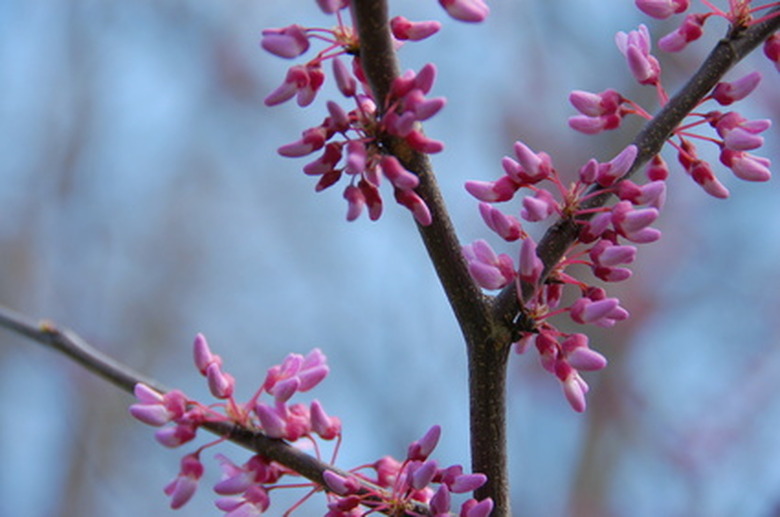Flowering Trees In Pennsylvania
Pennsylvania's climate, spread across USDA plant hardiness zones 4 through 7, accommodates a wide range of flowering trees. Adding a few of them to your Keystone State landscape will bring spring or summer blooms and, in many cases, edible fruit and autumn color. These native trees range from small accent plants to massive shade providers.
Sweet Buckeye
Sweet buckeye (Aesculus flava), a member of the horse chestnut family, grows wild along river bottoms and in the Pennsylvania mountain woods. Standing between 50 and 75 feet high, it has ground-sweeping, thick branches. This shade-loving tree has green summer leaves that provide red or orange autumn color. Between April and June, it has showy, erect spikes of creamy yellow flowers. Squirrels feed on the tan-husked buckeye nuts. Sweet buckeye, according to the Lady Bird Johnson Wildflower Center, requires full shade and moist, fertile, well-drained soil. Wind protection will prevent leaf scorch.
- Pennsylvania's climate, spread across USDA plant hardiness zones 4 through 7, accommodates a wide range of flowering trees.
- Standing between 50 and 75 feet high, it has ground-sweeping, thick branches.
Allegheny Serviceberry
Allegheny serviceberry (Amelanchier laevis) is a small, multitrunked tree standing from 15 to 25 feet tall. A member of the rose family, it grows wild in Pennsylvania's cool woods and thickets and along swamp edges. It has dense, fine branches with greenish blue leaves. The tree's clusters of fragrant white flowers appear before the leaves emerge in spring. Sweet, edible red summer berries that ripen to deep purple arrive in summer. Small mammals and birds feed on them.
Orange or red fall foliage and the tree's white-striped gray bark provide additional garden interest. Allegheny serviceberry grows easily in full sun to shade and slightly dry to moist, acidic (pH below 7.0) loam. Trees may suffer cosmetic damage from a variety of insects and diseases, according to the Lady Bird Johnson Wildflower Center.
- Allegheny serviceberry (Amelanchier laevis) is a small, multitrunked tree standing from 15 to 25 feet tall.
Southern Catalpa
Southern catalpa (Catalpa bignonioides), also called cigar tree for its narrow, flat brown seedpods, is native to Pennsylvania's stream banks and wetlands. Belonging to the trumpet-creeper family, it stands from 25 to 40 feet high and at least as wide. Its crooked branches have pale green, heart-shaped leaves up to 12 inches long. Southern catalpa makes a splendid spring showing with its large clusters of extremely fragrant, 2-inch lobed flowers. The white, trumpet-shaped blooms, appearing in May and June, have colorful yellow and purple interior markings. According to the Lady Bird Johnson Wildflower Center, this tree should be planted in partial shade and moist to wet soil.
